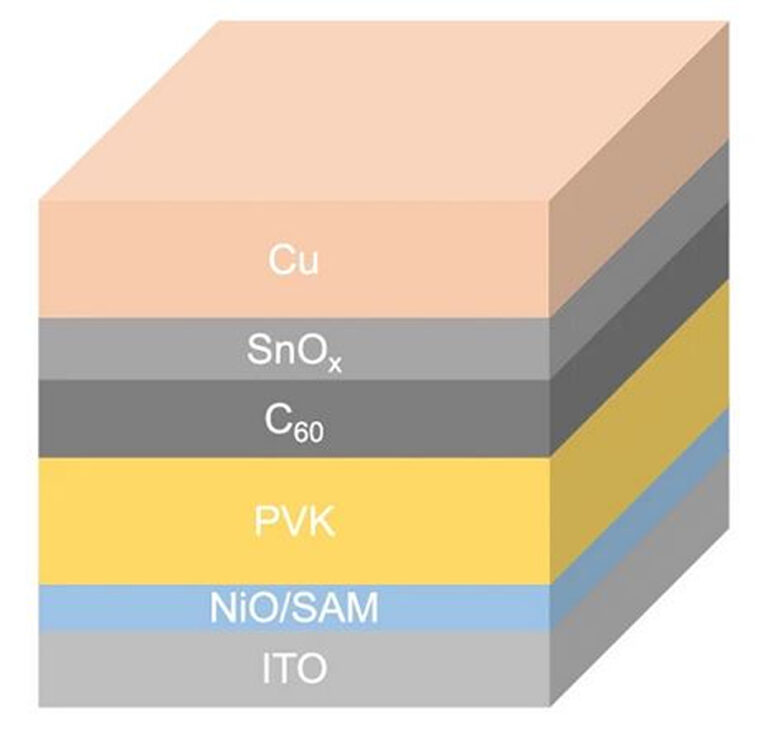Researchers in China have built a tandem perovskite solar cell with a top perovskite device based on an absorber treated with n-butanol, which is said to reduce the harmful effects of moisture in manufacturing processes carried out in air. The result is a tandem cell with improved charge collection.
A group of researchers led by Nanjing University in China has designed a perovskite-silicon tandem solar cell with a new solvent engineering strategy that uses n-butanol (nBA), also called normal butyl alcohol, which is a primary clear, colorless alcohol. used as a cleaning agent in many industries, including electronics manufacturing.
The scientists explained that nBA provides low polarity and saturation vapor pressure and allows the typical damaging effects of moisture in the production of perovskite cells in an ambient environment to be significantly reduced.
The perovskite film of the top device of the tandem cell had an active area of 0.049 cm22 and was fabricated via co-evaporation and blade coating techniques, which, according to the research group, meet the requirements for large-area fabrication of the perovskite films.
“It is worth noting that the second step was implemented in the air to match the realistic production environment,” it also explained, noting that nBa replaced the common ethanol and isopropyl alcohol, which negatively affect the uniformity of the film. “Both the polarity and the evaporation rate of the solvent have a joint effect on H2O absorption levels. In this vision, NBA emerges as the optimal solvent for our specific requirements.”
The nBa-based film was found to have improved charge collection, due to the larger grain sizes that minimize recombination, compared to control films developed with conventional solvents.
The researchers built the top cell with a glass-coated indium tin oxide (ITO) absorber, a nickel(II) oxide (NiO) layer, a hole transport layer (HTL) with a self-assembling monolayer (SAM), a perovskite absorber with an energy band gap of 1 .68 eV, an electron transport layer based on buckminsterfullerene (C60) and a tin oxide (SnOx) buffer layer, and a copper (Cu) electrode.
Tested under standard lighting conditions, this device achieved an energy conversion efficiency of 20.8%.
The top device was then integrated into a tandem cell with an active area of 1,044 cm22 by integrating a silicon solar cell with heterojunction at the bottom. This cell achieved an efficiency of 29.4%, an open-circuit voltage of 1.83 V, a short-circuit current density of 20.45 mA cm−2and a fill factor of 78.63%.
The team was also able to certify an efficiency of 28.7% for the tandem cell and 26.3% for a device with an opening area of 16 cm2. “The encapsulated device retained 96.8% of initial output after 780 hours of maximum power point tracking,” the academics added. “Additionally, we demonstrated the potential for commercial scale by achieving a conversion efficiency of 25.9% for 16 cm² devices manufactured via slot-die coating.”
They presented the cell in the newspaper “Solvent engineering for scalable fabrication of airborne perovskite/silicon tandem solar cells,” published in communication about nature. “This solvent technology strategy demonstrates the feasibility of commercial perovskite-silicon tandem solar cells,” they concluded.
This content is copyrighted and may not be reused. If you would like to collaborate with us and reuse some of our content, please contact: editors@pv-magazine.com.


